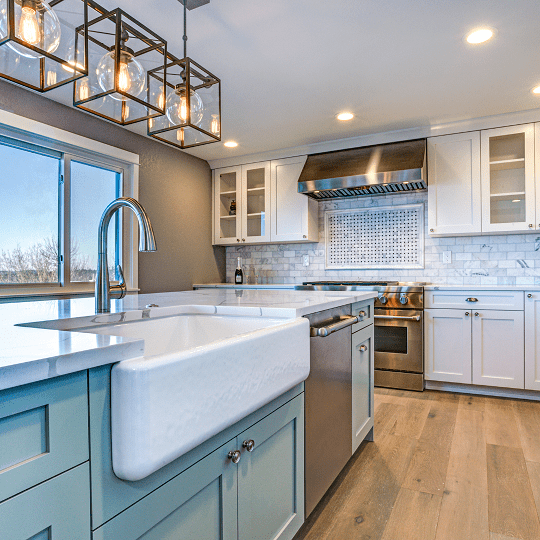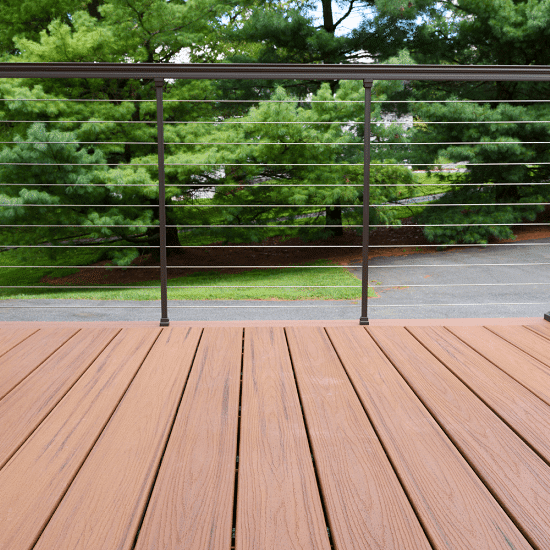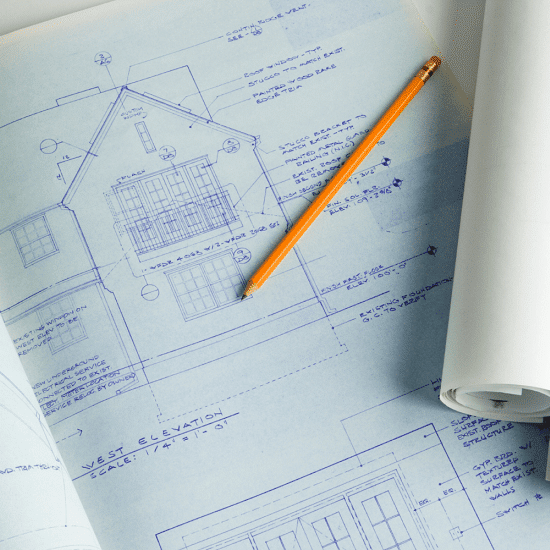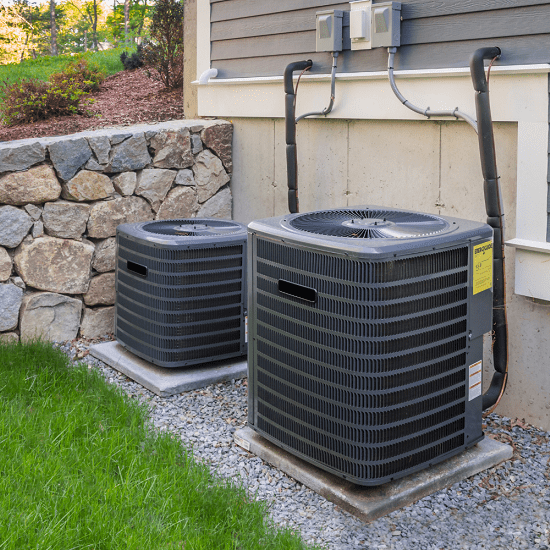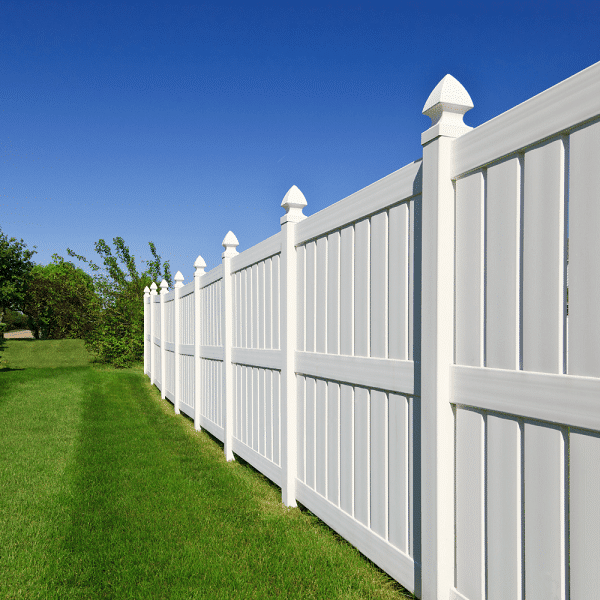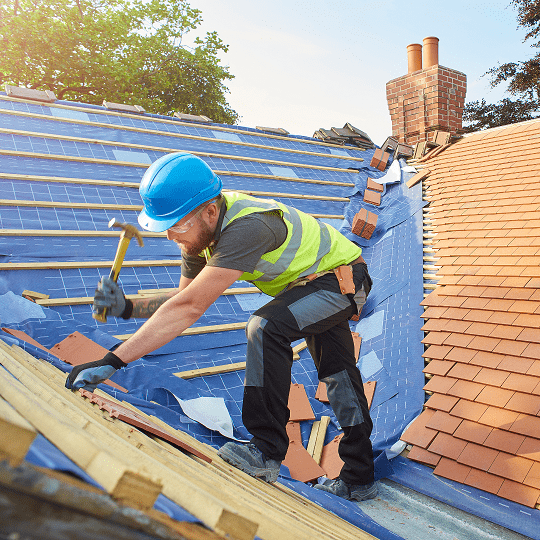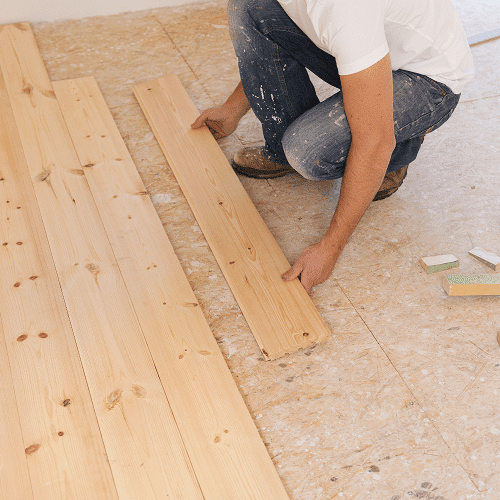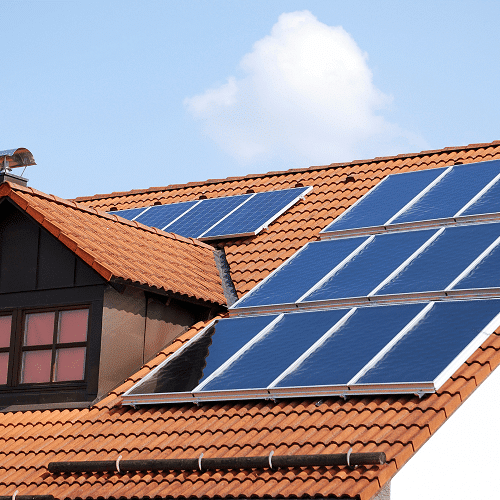HVAC Loans
Get pre-qualified for a HVAC system loan in just minutes. Checking rates won’t affect your credit score






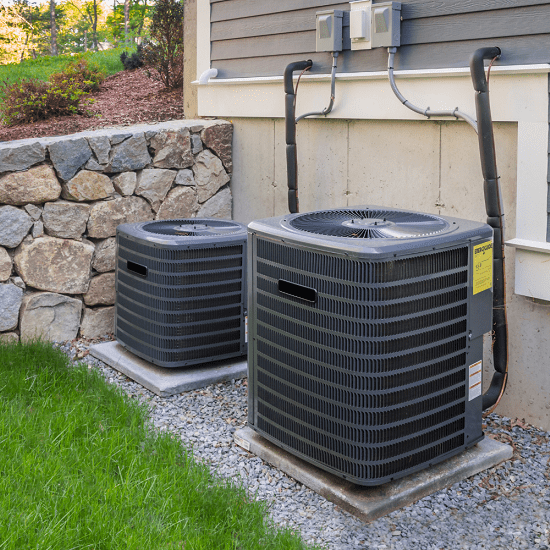
Best Options for Financing a New HVAC System
When the winter winds grow stronger or the summer heat becomes more intense, our reliance on HVAC systems to maintain comfort increases. To ensure our families' well-being during extreme weather, it is crucial to maintain or replace our HVAC systems as they begin to wear out.
Regrettably, HVAC system expenses can be substantial, varying depending on house size and the specific system chosen. Fortunately, homeowners have access to numerous financing options that can help ensure their homes are properly cooled and heated during these extreme seasons.
Applying for a HVAC loan is simple.
How Pasha Funding Works

Compare personal loan rates
Compare personal loan rates in April, 2025
HVAC systems are essential for maintaining a comfortable and healthy living environment in your home. They are responsible for both heating during the winter months and cooling in the summer, ensuring that you stay cozy all year round. However, getting a new HVAC system or replacing an old one can be quite expensive, with costs that can go up to $10,000 or more. This upfront cost is often a challenge for many homeowners.
But don't worry! There are options available to help you manage the financial burden of installing or replacing an HVAC system. HVAC loans and financing plans can help you spread out the cost over time, making it more affordable and easier to fit into your budget. With these financing options, you can enjoy the benefits of a new HVAC system without having to drain your savings account.
In this guide, we will explore everything you need to know about HVAC loans and financing options, including how they work, their benefits, and what to consider before applying. So let's get started!
Understanding HVAC Loans and Financing
HVAC loans and financing are financial solutions specifically designed to help homeowners manage the costs of heating, ventilation, and air conditioning (HVAC) system installations, repairs, or replacements. They work in a similar way to other types of loans – you borrow a certain amount of money from a lender and repay it, with interest, over a predetermined period.
Types of Loans for HVAC Projects
There are several types of loans that can be used for HVAC projects:
- Personal Loans for HVAC: These are unsecured loans that don't require any collateral. They can be used for virtually any purpose, including HVAC projects. Their key features include fixed interest rates, fixed monthly payments, and loan terms that typically range from one to seven years. Eligibility requirements usually include a good credit score and proof of income.
- Home Improvement Loans for HVAC: These loans are specifically meant for home improvements that increase the value of your home - like HVAC system upgrades. Some lenders may offer lower interest rates for home improvement loans compared to personal loans.
Factors Affecting Loan Approval
When applying for these loans, creditworthiness plays a crucial role in obtaining favorable loan terms. Lenders assess your creditworthiness based on your credit score, employment status, income level, and debt-to-income ratio. To improve your credit score:
- Pay your bills on time
- Keep your credit card balances low
- Don't close old credit cards unless necessary
- Limit new credit applications
Understanding APR for HVAC Loans
The APR, or Annual Percentage Rate, is another important aspect of HVAC loans and financing. The APR represents the total cost of borrowing money per year, including interest rates and fees. It's an effective tool to compare offers from different lenders - a loan with a lower APR will cost you less over time.
To compare APRs effectively:
- Always ask lenders for the total APR, not just the interest rate.
- Use online loan calculators to compare the total cost of different loans.
- Read the loan agreement carefully to understand all fees and charges.
By understanding these key concepts, you can make informed decisions about HVAC loans and financing.
Exploring Different Financing Options for HVAC Projects
When it comes to financing your HVAC project, there are several routes you might consider. These options can help make the costs of installing or replacing an HVAC system more manageable.
Emergency Funds for HVAC Expenses
Setting aside emergency funds specifically for unexpected HVAC repairs or replacements can significantly reduce the need for last-minute financing. This proactive approach provides a safety net, ensuring you're financially prepared when your HVAC system requires attention. This fund could be a dedicated savings account or a portion of a broader emergency fund. Regular contributions will add up over time, providing peace of mind and financial security.
Credit Cards with Zero-Interest Promotional Periods
Another viable option is using credit cards with zero-interest promotional periods as a short-term financing strategy for smaller HVAC projects. This approach allows you to cover immediate expenses without accruing interest charges, provided the balance is repaid in full within the promotional period. Be mindful, though, if the balance isn't cleared before the promotional period ends, high ongoing interest rates may apply.
Government Programs for HVAC Financing
In addition to these self-financing strategies, several government-backed loan programs can assist homeowners with energy-efficient home upgrades.
1. FHA Title 1 Loan
This program enables homeowners to improve their properties by borrowing money for updates — including installing energy-efficient systems — without needing equity in their homes.
2. FHA 203(k) Loan
These loans allow homeowners to finance both the purchase (or refinancing) of a house and the cost of its rehabilitation through a single mortgage or to finance the rehabilitation of their existing home.
Both programs promote energy efficiency and offer benefits such as lower interest rates and flexible repayment terms.
Low Income Home Energy Assistance Program (LIHEAP)
For low-income households struggling with the costs of energy-efficient HVAC systems, the Low Income Home Energy Assistance Program (LIHEAP) can provide significant relief. This federally funded program helps eligible low-income households with their energy costs, offering assistance for heating and cooling expenses, energy crisis assistance, weatherization, and energy-related home repairs.
Each of these options has its unique advantages, and the best choice will depend on your individual circumstances. By understanding these different paths, you can make an informed decision that best suits your financial situation.
Pros and Cons of Unsecured Personal Loans for HVAC Financing
When it comes to financing your HVAC project, you may be considering unsecured personal loans as an option. These loans have their advantages and disadvantages that you should think about before making a decision.
Securing Unsecured Personal Loans for HVAC Projects
Unsecured personal loans for HVAC financing are appealing because they offer flexibility. Unlike secured loans that require collateral, like home equity loans, unsecured loans only rely on your creditworthiness. Here's what you need to know:
- Flexibility in Use: The funds from an unsecured personal loan can be used not just for buying HVAC equipment but also for covering installation costs.
- No Collateral Required: With these loans, you don't have to worry about losing your home or other assets if you can't repay the loan. This is a significant consideration when compared to secured loans.
- Quick Funding: In many cases, the approval process for unsecured loans is fast, and the money is given to you quickly. This makes it an attractive choice when time is of the essence.
Despite these benefits, there are also some downsides:
- Higher Interest Rates: Because there's no collateral involved, lenders usually charge higher interest rates on unsecured loans compared to secured ones.
- Credit Score Impact: Your credit score plays a big role in determining whether you qualify for these loans and the interest rate you'll get. If your score is lower, it could mean higher costs over the life of the loan.
The Role of Credit Scores in Securing Financing
Your credit score gives lenders an idea of how reliable you are with money and greatly affects their decisions. Here's how it influences your ability to get an unsecured personal loan for HVAC projects:
- Interest Rates: Generally, the higher your credit score, the lower the interest rates offered by lenders.
- Loan Terms: Having an excellent credit score can also mean getting better loan terms and being able to borrow more money.
If your credit score isn't where you want it to be, there are some things you can do to improve it:
- Pay Bills on Time: Late payments can have a significant negative impact on your credit score.
- Reduce Debt Levels: Aim to lower the amount of debt you owe by paying off existing debts.
- Check Your Credit Report: Make sure there aren't any errors on your credit report that are hurting your score.
- Avoid Opening New Credit Lines: Each time you apply for new credit, it can cause a small drop in your credit score due to something called a hard inquiry.
By focusing on these areas, you can increase your chances of getting a loan with better terms.
Utilizing Credit Cards with Zero-Interest Promotional Periods for Short-Term HVAC Financing
If you have an immediate need for HVAC services and can manage to repay the money quickly, using credit cards that offer zero-interest promotional periods might be a good short-term solution. Here's why it can be appealing:
- Immediate Access to Funds: With these credit cards, you're able to cover urgent expenses right away.
- No Interest Costs: As long as you handle things responsibly and pay off the balance within the promotional period, you won't have to pay any interest.
However, there are some things you should be cautious about:
- Promotional Period Limitations: If you don't manage to repay everything before the promotional period ends, high interest rates will kick in and apply retroactively.
- Credit Utilization Impact: Having high balances on your credit cards can negatively impact your credit score by increasing something called your utilization ratio.
Whether you decide to go with unsecured personal loans or zero-interest credit cards for HVAC financing, it's important to carefully look at the terms and conditions. Make sure that whichever option you choose works well with your financial situation and project needs while also considering how it might affect your future financial opportunities.
Utilizing Credit Cards with Zero-Interest Promotional Periods for Short-Term HVAC Financing
Another viable option to consider when looking for ways to finance your HVAC project is the use of credit cards. Specifically, those that offer zero-interest promotional periods can be an effective tool to cover immediate HVAC expenses without accruing interest charges.
When considering this option, it's important to note a few key factors:
Strategic Use of Credit Cards
Just like unsecured personal loans for HVAC, credit cards can be a beneficial tool if used strategically. The zero-interest promotional period allows you to make purchases or fund your HVAC project without incurring any interest expense as long as you repay the balance within the specified timeframe.
Repayment Period
The zero-interest period typically lasts from 6 to 21 months, depending on the credit card provider. This provides a window of opportunity in which you can repay the borrowed amount without any added interest. It's crucial to have a repayment plan in place and stick to it diligently.
Potential Pitfalls
While credit cards offer convenience and immediate access to funds, they come with their own set of potential pitfalls. If the balance isn't paid off in full during the promotional period, high ongoing interest rates will apply. These rates can often be significantly higher than those associated with personal loans or home equity loans.
Impact on Credit Scores
Another factor worth considering is how this strategy might impact your credit scores. High credit utilization – that is, using a large percentage of your available credit – can negatively affect your credit score. Therefore, if you choose this route, it's advisable to keep your credit utilization below 30% and ensure punctual payments.
To summarize, zero-interest promotional periods on credit cards can be effectively utilized for short-term HVAC financing with careful planning and disciplined repayment. However, it's essential to understand that this strategy requires strict discipline in paying off the balance within the promotional period. Failure to do so may lead to high interest charges, and potential negative impact on your credit score.
Finding the Best Home Improvement Loan Products for HVAC Projects
When it comes to financing your HVAC project, researching and comparing home improvement loans is a crucial step. You want to ensure you're getting the best deal possible, considering factors such as interest rates, repayment terms, and lender reputation.
Factors to Consider when Comparing Home Improvement Loans
To start with, interest rates significantly impact how much you'll pay over the life of the loan. Lower rates mean lower monthly payments and less interest paid over time. Compare rates from multiple lenders to ensure you're getting the most competitive offer.
Repayment terms also play a significant role in determining your monthly payment and how long you'll be paying off your loan:
- Longer repayment periods result in smaller monthly payments but more interest paid over time.
- Conversely, shorter repayment terms lead to higher monthly payments but less interest paid overall.
Another key factor is lender reputation. Ensure that any potential lender is reputable and trustworthy. Read online reviews and check out their rating with the Better Business Bureau before making a decision.
Comparing Home Improvement Loans Online
Comparing home improvement loans can be done efficiently using online marketplaces or platforms where homeowners can easily access multiple loan offers for their HVAC projects.
For instance, lending platforms like LendingTree and Credible allow you to compare offers from multiple lenders in one place. These platforms gather quotes based on your creditworthiness and the specifics of your HVAC project, allowing you to evaluate offers side by side.
SoFi and LightStream are other online lenders worth considering. SoFi offers personal loans with competitive rates for borrowers with good credit, while LightStream provides no-fee home improvement loans with flexible terms.
Steps to Effectively Compare Loan Offers
Here are some steps to effectively compare loan offers:
- Gather information about your financial situation (credit score, income, debts)
- Identify how much you need for your HVAC project
- Use an online marketplace to request quotes from various lenders
- Compare each quote based on the APR (which includes the interest rate and any fees), repayment terms, and monthly payments
- Read customer reviews and lender ratings to assess their reputation
By taking the time to research and compare HVAC loan options, you'll be better equipped to find a home improvement loan product that fits your needs and budget.
Quick links

Ready to apply for an HVAC loan? Get started.
Need help finding the right loan?
No worries, we've got you covered! Compare personalized loan options in just minutes.
Pre-Qualifying for HVAC Financing
Understanding the process of pre-qualifying for a personal loan is an essential step towards financing your HVAC project. Why? It helps you understand your borrowing capacity, it can give you an edge when negotiating with contractors, and it helps streamline the actual loan application process.
Steps to Pre-Qualify for HVAC Financing
Pre-qualification involves a lender performing a soft credit check to provide an estimate of the loan amount, interest rate, and terms you might qualify for. This won't impact your credit score. Here's how you can approach it:
- Choose a few potential lenders that offer HVAC loans and accept pre-qualification applications.
- Submit your pre-qualification form. This typically includes basic information such as your name, address, income details, employment status, and Social Security number.
- Review the loan offers from each lender. Remember that these are estimates and not final offers.
Documents Required for HVAC Loan Application
Once you have your pre-qualification offers in hand, it’s time to prepare for the actual loan application process. You'll need to gather some essential documents:
- Proof of Income: This could be recent pay stubs, tax returns or bank statements.
- Proof of Employment: A recent job letter or similar documentation may be necessary.
- Proof of Property Ownership: If considering a home improvement loan, you may need to show proof of ownership such as a deed or mortgage statement.
- Credit History: Though lenders will perform a credit check, it's wise to know your credit score beforehand.
Factors to Consider When Comparing HVAC Financing Options
Armed with pre-qualification results and required documents, you're now ready to compare different HVAC financing options. While interest rates and fees are crucial determinants, other factors should guide your decision:
- Repayment Flexibility: Does the lender offer flexible repayment schedules or the ability to pay off the loan early without penalties?
- Special Borrower Benefits: Some lenders offer perks such as discounted interest rates for automatic payments or rewards for consistent on-time payments.
- Loan Disbursement Time: How quickly the lender can disburse funds might be a critical factor if your HVAC project is urgent.
- Customer Service: Consider lenders that provide excellent customer service. This includes accessibility, responsiveness, and providing clear information about the loan products.
Understanding how to pre-qualify and compare loans equips you with the knowledge to make informed decisions towards financing your HVAC project. Remember, choosing the right loan is not just about the lowest interest rate but also about finding a loan that fits your financial situation and needs.
Government Support for Energy-Efficient HVAC Upgrades
In an effort to promote energy efficiency and assist homeowners with the associated costs, the government offers specialized loan programs. Two notable options are the FHA Title 1 loan and the FHA 203(k) loan. Both programs are designed to finance home improvement projects, including energy-efficient upgrades to HVAC systems.
FHA Title 1 Loan
The FHA Title 1 loan is a government-backed loan intended for home improvements that enhance the livability and utility of a property. Here is what you need to know:
- Eligibility Criteria: Homeowners who occupy the property and have a debt-to-income ratio within acceptable limits may apply. There's no requirement for equity in the home.
- Loan Limits: The maximum loan amount for a single-family house can reach up to $25,000 with a repayment term typically extending up to 20 years.
- Application Process: To apply, you must find a Title 1-approved lender. The process involves submitting necessary documentation such as proof of income, credit history, and details regarding the planned improvements.
FHA 203(k) Loan
For more extensive renovations that include HVAC systems among other changes, the FHA 203(k) rehabilitation loan might be the right fit.
- Eligibility Criteria: Applicants must own and occupy the property in question or plan to do so once renovations are complete. The project must also begin within 30 days of closing and be completed within six months.
- Loan Limits: The maximum amount borrowed typically correlates with the property's projected value after improvements.
- Application Process: Similar to Title 1 loans, you'll need to work with an FHA-approved lender. Detailed proposals including cost estimates for labor and materials are essential components of your application.
These loans allow homeowners to bundle their mortgage with additional funds for renovations, streamlining payments into a single monthly bill.
Key Considerations
When considering government-backed loans for HVAC projects, keep these points in mind:
- Both loan types require detailed documentation and compliance with specific guidelines related to energy efficiency.
- You may need to hire certified contractors who meet HUD standards.
- Interest rates might vary depending on factors such as credit score and market conditions but tend to be competitive due to government backing.
Advantages of Government-Backed Loans
- They often offer lower interest rates compared to conventional loans.
- They provide opportunities for financing without substantial home equity.
- They incentivize energy-efficient upgrades which can lead to long-term utility savings.
Challenges
- The paperwork and requirements can be more complex than traditional financing methods.
- Projects funded by these loans must adhere strictly to government specifications regarding energy efficiency.
By opting for an FHA Title 1 or FHA 203(k) loan, you invest not only in your comfort but also in reducing your environmental footprint through energy-efficient HVAC systems. These programs reflect governmental support towards sustainable living practices while also acknowledging that upfront costs should not be a barrier to improvement. With ample preparation and understanding of these financing options, homeowners stand better equipped to make informed decisions about their heating, ventilation, and air conditioning needs without compromising financial stability.
Considering Mortgage Refinancing as a Long-Term Solution for HVAC Financing
Mortgage refinancing for HVAC projects is an important consideration when you are seeking to fund significant improvements to your home's heating, ventilation, and air conditioning (HVAC) systems. It's a more substantial financing option, usually reserved for extensive renovations rather than minor repairs or replacements.
Refinancing a mortgage essentially means replacing the existing mortgage with a new one. This process can come with its own set of advantages and disadvantages which homeowners need to assess carefully.
The Benefits of Using Mortgage Refinancing for HVAC Improvements
One of the main advantages of using mortgage refinancing is the potential for extended repayment terms. This can make the financial burden less stressful, as it spreads out your payments over a longer period.
Another benefit is the possibility of overall interest savings. If you refinance your mortgage at a lower interest rate than your original loan, you could potentially save thousands of dollars over the course of the loan.
Here are some key benefits:
- Extended repayment terms
- Potential overall interest savings
- Financing is secured against your property
- Larger loan amounts available compared to other forms of financing
The Drawbacks of Mortgage Refinancing
On the flip side, there are also potential downsides to consider when thinking about mortgage refinancing:
- Costs associated with refinancing such as closing costs and possible prepayment penalties on your current mortgage
- The risk of foreclosure if you fail to make payments
- The extension of your debt timeline which may impact long-term financial planning
A Suitable Choice for Major Renovations
Given these factors, it's clear that mortgage refinancing for HVAC projects is best suited for homeowners planning significant HVAC renovations. These often involve comprehensive upgrades or installations that require substantial funding.
For smaller repairs or replacements, alternative financing options such as personal loans or zero-interest credit cards might be more appropriate. These options tend to have shorter repayment terms and are less risky.
To summarize, mortgage refinancing can be a viable HVAC financing solution under the right circumstances. It's essential to weigh all the pros and cons before deciding if this is the best route for you.
Remember, no matter which financing option you choose, it's crucial to factor in your own financial situation and comfort level with the associated risks. Always do your homework and consult with a financial advisor to ensure you're making the most informed decision.
Conclusion
Selecting the right HVAC loans and financing options requires thorough analysis and reflection on your personal financial situation. Opting for an HVAC loan or financing solution should be in harmony with your budgetary constraints and long-term financial objectives.
- Early exploration of available HVAC financing avenues can lead to discovering comprehensive programs that not only provide beneficial terms but also ensure compatibility with your specific requirements.
- It's imperative to engage in proactive discussions with lenders, asking pertinent questions and clarifying doubts from the onset of the application process right through to the final repayment. This level of engagement fosters transparency and can help prevent any misunderstandings, ensuring a seamless financial transaction for your home's HVAC needs.
- As you continue to navigate through various options, remember that each choice carries its unique set of advantages and considerations. Whether it is a personal loan, a home improvement loan product, or an alternative financing method, the decision should be informed by careful consideration of terms such as APRs, fees, and repayment schedules. By doing so, you position yourself to make an informed choice that aligns with both your immediate needs and future financial well-being.
Compare personal loans from top lenders
Are you ready to find a personal loan for your needs? We've partnered with Credible to help you find your rate. Checking your score is free and won't impact your credit!
Need help finding the right loan?
No worries, we've got you covered! Compare personalized loan options in just minutes.
Find Your Best Rate
Compare Best Personal Loans
Personal Loan Payoff Calculator
Personal Loan Lender Reviews
Personal Loans By Credit
Personal Loans for Fair Credit
Personal Loans for Good Credit
Personal Loans for Excellent Credit
Personal Loan Types
Auto Repair Loans
Credit Card Consolidation Loans
Fast Personal Loans
Home Improvement Loans
Horse Barn Financing
Wedding Loans
Family Planning Loans
Funeral Financing
Land Purchase Financing
Manufactured Home Financing
Medical Loans
Cosmetic & Plastic Surgery Financing
Owner Builder Construction Loans
Personal Loans for House Down Payment
Personal Loans for Self Employed
Personal Loans for Furniture Expenses
Student Loans
Debt Consolidation Loans
Vacation & Travel Loans
Emergency Personal Loans
Personal Loans with Co-signers
Home Improvement Financing
Appliance Financing
Bathroom Remodel Financing
Basement Remodel Financing
Boat Dock Loans
Deck Financing
Driveway Paving Financing
Fence Financing
Flooring Financing
Furnace Financing
Garage Financing
Home Addition Financing
Hot Tub Financing
HVAC Financing
Home Insulation Financing
Interior & Exterior Painting Financing
Kitchen Remodel Financing
Kitchen Cabinet Financing
Pole Barn Financing
Roof Financing
Solar Panel Financing
Swimming Pool Financing
Sunroom Addition Loans
Window Replacement Financing
Loan rate & terms disclosure: Prequalified rates are based on the information you provide and a soft credit inquiry. Receiving prequalified rates does not guarantee that the Lender will extend you an offer of credit. You are not yet approved for a loan or a specific rate. All credit decisions, including loan approval, if any, are determined by Lenders, in their sole discretion. Rates and terms are subject to change without notice. Rates from Lenders may differ from prequalified rates due to factors which may include, but are not limited to: (i) changes in your personal credit circumstances; (ii) additional information in your hard credit pull and/or additional information you provide (or are unable to provide) to the Lender during the underwriting process; and/or (iii) changes in APRs (e.g., an increase in the rate index between the time of prequalification and the time of application or loan closing. (Or, if the loan option is a variable rate loan, then the interest rate index used to set the APR is subject to increases or decreases at any time). Lenders reserve the right to change or withdraw the prequalified rates at any time.
Requesting prequalified rates on Credible is free and doesn't affect your credit score. However, applying for or closing a loan will involve a hard credit pull that impacts your credit score and closing a loan will result in costs to you.

